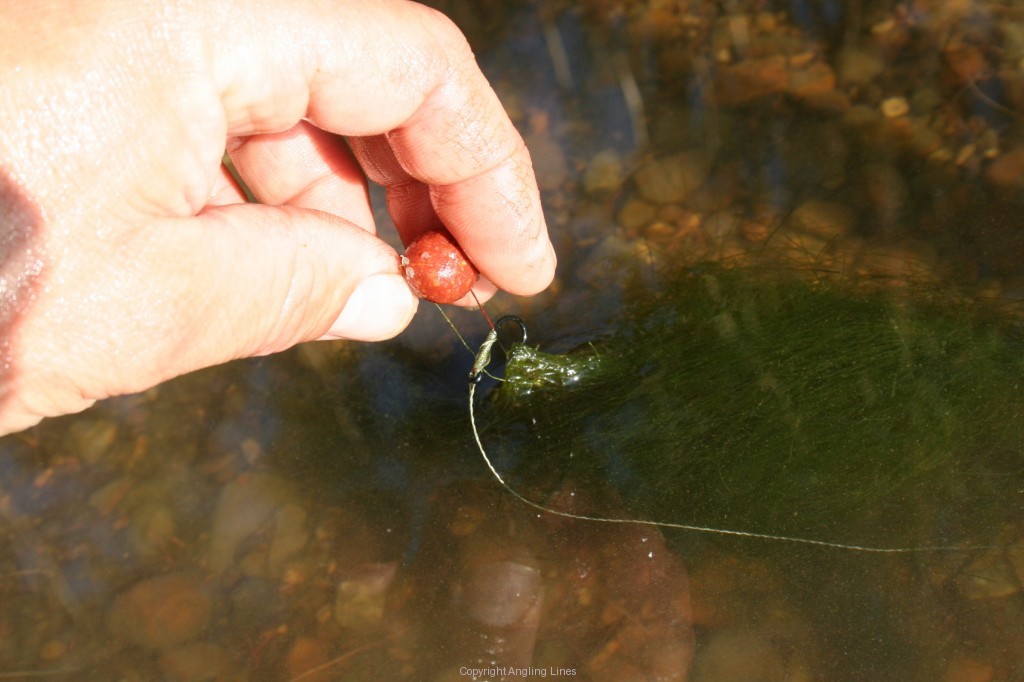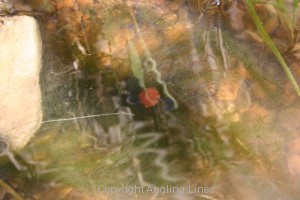
Silk weed – love it!
I must admit it does make me smile when I see anglers trying to find clear areas to present their baits when confronted with a swim full of silk weed.
Silkweed harbours a lot of natural food particularly shrimps which the carp love which in turn means they will regularly be visiting these food rich areas as a matter of course. The natural world is baiting up for you constantly if you take time to find the natural food harbours.
Rather than try and find clear areas to present your baits you would do yourself a far bigger favour to find the ‘hotspot’ areas of weed containing the most food.
Simply cast out with a heavy bottom bait on leave it a few seconds to settle then wind in. The bait will help get the hook down a little further into the weed so it becomes a mini grapple hook for gathering samples. Examine what you have wound in and see what sort of creepy crawlies there are. If there is nothing then try another area until you encounter life.
You can learn so much by just simply winding in. Even in weed free waters I always take time to inspect any bits on the rig and always smell the lead. This tells you so much and is again something I rarely see other anglers doing. You can waste a lot of time fishing in ‘bad silt’ when a quick smell of the swivel on your lead would have told you it wasn’t a good area.
Now I’m really struggling with the written word to explain different smells so the best I can do is that areas to avoid will smell a little like rotten egg and the areas to definitely give a go will smell more like soil in the garden.
I went off on a small tangent there but smelling the weed will also give a lot away. Sometimes the weed smells nice and fresh whilst other times it can be past its best so to speak. Similarly the colour varies a fair bit and I’m always happier fishing on brighter coloured silk weed than I am on dark weed which sometimes comes back almost black.
Anyway back to the presenting of baits in silkweed. There are two simple rules I apply. The first is to avoid any stiff link type materials as the presentations generally look awful if you go to the trouble of having a look. I much prefer to use either a soft braid or simple monofilament in normal breaking strains. The mono often stands out far less visibly than braid and as silkweed generally grows best in clear water this is something to bear in mind. If conditions allow try a simple 8, 10 or 12lb nylon hook link. You may get a pleasant surprise how many bonus takes you get.

Standard bottom bait very visible on silweed
The other thing I do is use barbless hooks in silkweed. I have written about this subject in the magazines before but three different correspondences over these past couple of weeks have prompted me to put a few thoughts back down on paper thus this Blog.
Now I will get one thing straight I am not a lover of barbless hooks at all and choose to use barbed hooks when allowed to do so apart from when fishing in silk weed.
Quite simply a barbed hook fished in silkweed makes it difficult and sometimes impossible for a carp to actually get a bait and hook into their mouth. Hardly an ideal scenario when you need them to do this as easily as possible to stand a chance of catching them.
If you are suffering a lot of hook pulls it is possibly simply a case of you making it difficult for the carp to actually take the hook bait. Next time you wind in a ball of silkweed drop it back in the margins then drop your rig amongst it. Next simulate a carp over it. Remember when a carp wants to stop swimming they have to back pedal their pectoral fins. The larger the carp the more water movement they create. Now try and pick that bait up and nine times out of ten the barb will be stuck in the weed hindering the free movement of the bait.
Now remove the barb from the hook or do the same experiment at the side of it with a barbless rig. Pick up the bait and it comes out as easily as it should. Believe me I hate barbless hooks but don’t even consider using barbed when fishing in silkweed.
Now I know there are often clear areas amongst the silkweed but these in my mind have already been cleared of a lot of the natural food and to try and land the hook bait on them can lead to a lot of swim disturbance through re-casting.
Now just sit back and think about it for a while. You have found a clean patch of gravel 50m out which is a couple of metres long shaped like a banana. You proceed to introduce a couple of hundred boilies with the catapult or throwing stick. Now how many of those free baits do you think are going to actually settle on the clear area? A lot of the bait will end up in the weed and the carp will certainly find these and eat them.
Baits presented on the clear areas arouse suspicion straight away. It is where a carp is expecting to find a trap and it’s difficult to conceal your tackle when fishing into a hole in the weed as the weed closest to you holds the line up so in effect you are tight lining to the lead and bait in an area where the fish will be slightly more on guard. Definitely not an ideal situation and now that you have a method which will allow the carp to take the bait easily in the silkweed where most of the freebies are why bother to make things difficult for yourself?
Don’t worry about the carp finding your bait – they will. They find bloodworm buried in silt and tiny shrimps hiding in weed and those I have tried to smell have never had a smell I can detect. All the baits I use do – nuff said!
So, there you have it. A few little silkweed fishing secrets learned over many years and handed over on a plate. Never avoid silkweed – carp don’t.
Best fishes, Shaun Harrison, Quest Baits

Comments